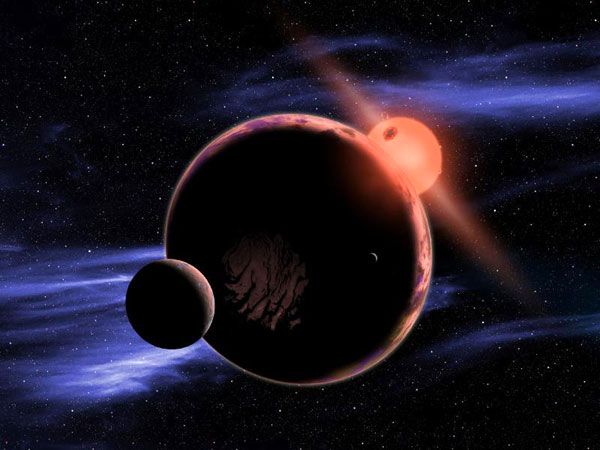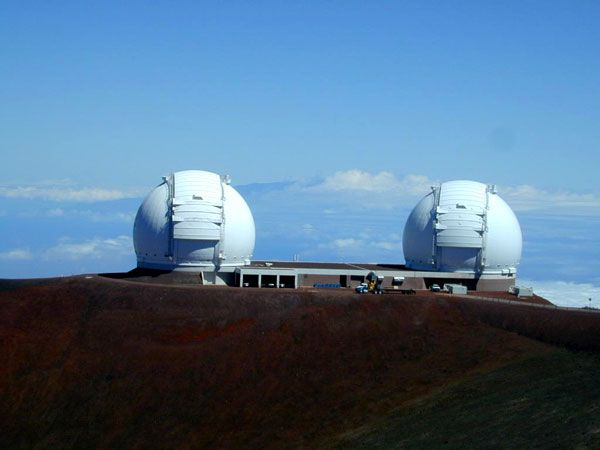
D. Aguilar / Harvard-Smithsonian Center for Astrophysics
Kepler Update... In a topic that could be discussed in a future episode of The Big Bang Theory (just thought I'd bring that show up since I mentioned it in my previous post... Consistency, consistency, consistency), here's an interesting news release about how habitable planets may be more abundant in our galaxy (and closer to Earth) than we thought. Excelsior! (Got that line from the recent Oscar-nominated flick, Silver Linings Playbook.)
****
Kepler Data Suggest Earth-size Planets May Be Next Door (Press Release - February 6)
Using publicly available data from NASA's Kepler space telescope, astronomers at the Harvard-Smithsonian Center for Astrophysics (CfA) estimate that six percent of red dwarf stars in the galaxy have Earth-size planets in the "habitable zone," the range of distances from a star where the surface temperature of an orbiting planet might be suitable for liquid water.
The majority of the sun's closest stellar neighbors are red dwarfs. Researchers now believe that an Earth-size planet with a moderate temperature may be just 13 light-years away.
"We don't know if life could exist on a planet orbiting a red dwarf, but the findings pique my curiosity and leave me wondering if the cosmic cradles of life are more diverse than we humans have imagined," said Natalie Batalha, Kepler mission scientist, NASA's Ames Research Center in Moffett Field, Calif.
The research team analyzed 95 planet candidates in the Kepler catalog orbiting 64 red dwarf stars. Most of these candidates aren't the right size or temperature to be considered Earth-like, as defined by the size relative to Earth and the distance from the host star. However, three candidates are both temperate and smaller than twice the size of Earth.
Red dwarf stars are smaller, cooler, and fainter than the sun. An average red dwarf is only one-third as large and one-thousandth as bright as the sun. Consequently, the not too hot or not too cold habitable zone would be much closer to a cooler star than it is to the sun.
"This close-in habitable zone around cooler stars makes planets more vulnerable to the effects of stellar flares and gravitational interactions, complicating our understanding of their likely habitability," said Victoria Meadows, professor at the University of Washington and principal investigator with the NASA Astrobiology Institute. "But, if the planets predicted by this study are indeed found very nearby, then it will make it easier for us to make the challenging observations needed to learn more about them, including whether or not they can or do support life."
The three planetary candidates highlighted in this study are Kepler Object of Interest (KOI) 1422.02, which is 90 percent the size of Earth in a 20-day orbit; KOI-2626.01, 1.4 times the size of Earth in a 38-day orbit; and KOI-854.01, 1.7 times the size of Earth in a 56-day orbit.
Located between 300 to 600 light-years away, the three candidates orbit stars with temperatures ranging from 3,400 to 3,500 degrees Kelvin. By comparison, the temperature of the sun is nearly 5,800 degrees Kelvin.
Kepler is the first NASA mission capable of finding Earth-size planets in or near the habitable zone. Kepler is detecting planets and possible candidates with a wide range of sizes and orbital distances to help scientists better understand our place in the galaxy.
Ames manages Kepler's ground system development, mission operations and science data analysis. NASA's Jet Propulsion Laboratory in Pasadena, Calif., managed Kepler mission development. Ball Aerospace and Technologies Corp. in Boulder, Colo., developed the Kepler flight system and supports mission operations with JPL at the Laboratory for Atmospheric and Space Physics at the University of Colorado in Boulder.
The Space Telescope Science Institute in Baltimore archives, hosts and distributes the Kepler science data. Kepler is NASA's 10th Discovery Mission and is funded by NASA's Science Mission Directorate at the agency's headquarters.
Source: NASA.Gov
****

NASA / JPL - Caltech

No comments:
Post a Comment